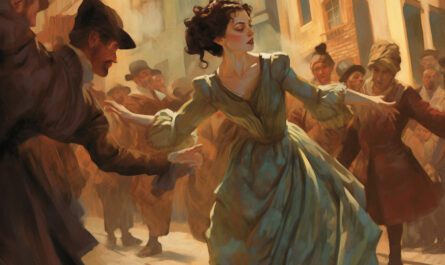The Romantic period, spanning the late 18th to the early 19th century, was a reaction against the industrial and societal shifts of the time. The advent of industrialization marked a significant departure from traditional rural life, leading to an increased valuation of the natural world among poets and writers who felt alienated by the new mechanized society. Romantic poetry thus emerged as a counter-narrative to the industrial revolution, emphasizing the significance of emotional expression, the beauty of the natural world, and the individual’s experience within it.
The Romantic poets, including figures like William Wordsworth, Samuel Taylor Coleridge, and Percy Bysshe Shelley, often portrayed nature as a dynamic and nurturing force, offering solace from the hardships of the industrial age. They saw the natural world as a source of inspiration and moral guidance, enabling a deeper connection with the self and the universe. Unlike the Enlightenment’s focus on reason and order, Romanticism celebrated the sublime aspects of nature—its capacity to evoke awe, wonder, and a sense of the infinite.
This era’s poetry often featured vivid landscapes, pastoral scenes, and natural phenomena as metaphors for human feelings and existential musings. Romantic poets used these elements to explore themes of love, loss, and the human condition, forging a deep connection between the individual’s inner world and the external natural environment.
Wordsworth’s “Tintern Abbey,” for example, illustrates this interplay between nature and the human psyche, portraying the landscape as both a source of contemplative solitude and a catalyst for personal growth. Similarly, Coleridge’s “Rime of the Ancient Mariner” employs natural imagery to delve into themes of guilt, redemption, and the interconnectedness of all living things.
The Romantic fascination with the past and the medieval era also influenced their portrayal of nature, often idealizing it as a purer, more harmonious world. This longing for an idealized past was a form of escapism from the present’s rapid changes and uncertainties.
Moreover, the Romantics’ interest in the exotic, the mysterious, and the supernatural led them to explore the natural world’s more enigmatic and mystical aspects. Their poetry frequently ventured beyond the observable landscape into the realms of fantasy and imagination, where nature assumed magical or otherworldly qualities.
Their rebellion against social and literary conventions is evident in their unconventional themes and styles, including a preference for spontaneous, organic forms over the structured compositions of earlier periods. This shift mirrored their broader rejection of industrial society’s mechanistic values in favor of a more intuitive and empathetic approach to life and art.
The Romantic poets’ sympathy for the individual against the masses and their interest in folk culture reflected a democratic impulse, valuing the experiences and expressions of the common person. This stance marked a significant departure from the aristocratic and often urban-centric perspectives of previous literary eras.
The enduring legacy of nature in Romantic poetry lies in its continued relevance to contemporary literature and its influence on modern perceptions of the natural world. The Romantic emphasis on individual emotion and the natural environment continues to resonate, reflecting ongoing concerns about industrialization’s impact on human life and the planet.
In this context, the study of Romantic poetry and its relationship to nature offers valuable insights into the period’s cultural and historical dynamics. It also provides a lens through which to view our current relationship with the natural world, highlighting the contrast between the industrial and the natural, the individual and the collective, and the material and the spiritual.
The Romantic era’s poetry remains a pivotal point in literary history, offering a rich exploration of the human experience and its intrinsic connection to the natural world. Through their innovative use of language, structure, and imagery, the Romantic poets left an indelible mark on the literary landscape, shaping the trajectory of poetry and influencing generations of writers and thinkers to come. Their work continues to inspire a deeper appreciation of nature’s role in human life and the arts, underscoring the timeless interplay between humanity and the world it inhabits.



